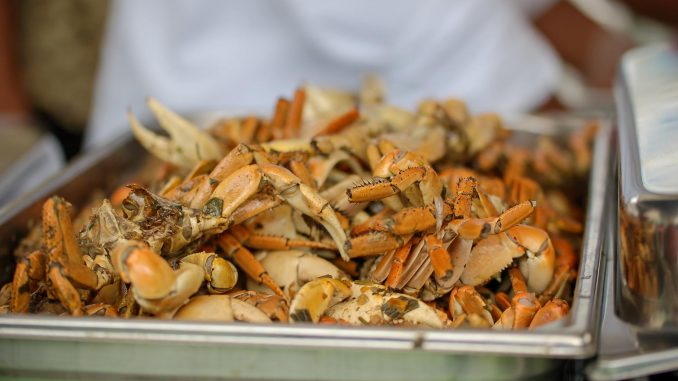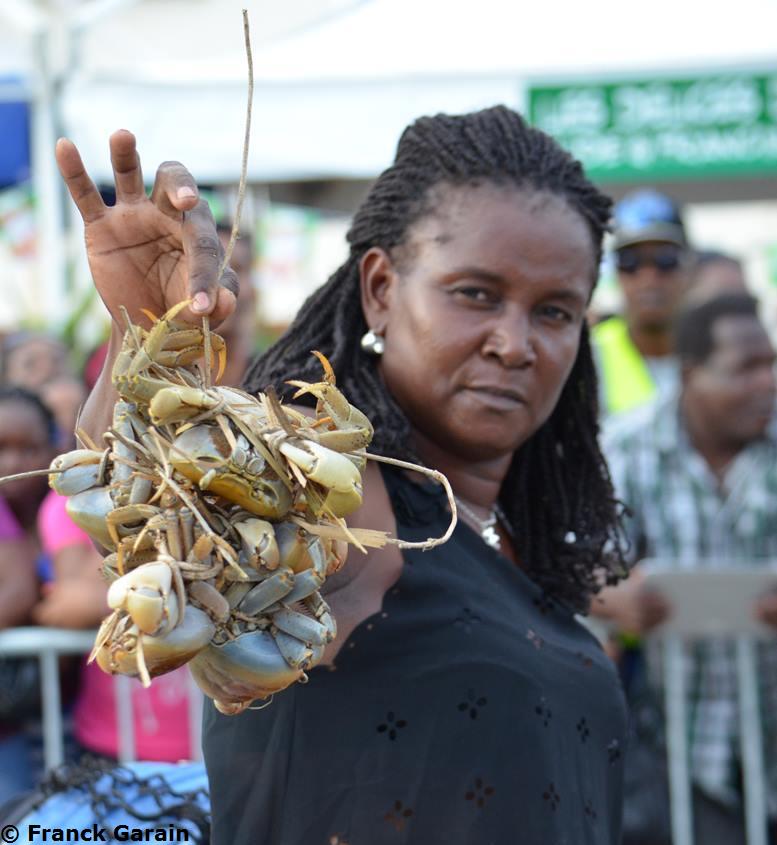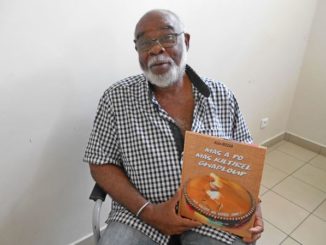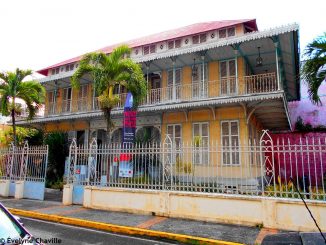
Since 1992, “The Crab Festival” is a popular meeting at Easter which enhances the Guadeloupean and Caribbean heritage because it was able de reinvent itself, to the great satisfaction of the 25 000 visitors, every year.
The concept of “The Crab Festival” was born in 1992. The following year, the success of the event was dazzling : only five restaurants but thousands of people in the town of Morne-à-l’Eau (5000 visitors, according to the organizers), 1200 meals sold in one hour…“The idea came from the Center of Studies and Research on Morne-à-l’Eau that I had created with friends in 1985 (…)”, says Franck Garain, historian and coordinator of “The Crab Festival”. And the latter continues : “we already thought at that time that Guadeloupe was a set of sub-regions with their own opportunities which should be developed. That is how in our projects there was a major study of crab which materialized in a proposal for a Day Crab (…) The idea was to help the catering sector in a town with economic difficulties. Gradually, we made it a tourist event, in collaboration with associations of the municipality and from other parts of Guadeloupe, enriched with activities around the crab (…)”.
Crab, an economic pillar
Morne-à-l’Eau became the “Town of Crab” because of its coasts populated with mangroves and with this crustacean. During colonization, crab already fed the slaves. “With the Abolition of slavery which leaves the “free men” to face their fates alone, the phenomenon increases and the sale of crabs allows families to subsist, young people to buy school books and to become these “subjects” : doctors, lawyers, public servants (…)”, specifies the historian.
The Association for the Protection and Development of Crab and other Resources in Magrove swamp (APRODCARM) and the Union for the development of Morne-à-l’Eau, organizers of the event, focus on several aspects.
The cultural aspect with the place of crab in gastronomy for Easter in Guadeloupe.

To protect mangrove and crabs
The economic aspect by promoting restaurant owners, cooks, regional products and local craftsmen.“We also insist once again on the need to find alternatives to importation which, although it generates employment, means a gradual loss of food self-sufficiency in Guadeloupe. So this makes us even more vulnerable to world market fluctuations so we imagine that the cargo ships cannot dock anymore (…) We must protect production areas, create real sectors that can meet the local market”, explains Franck Garain.
The tourist aspect by the discovery of historic, cultural and natural potentialities with the “Crabs Rally” in Morne-à-l’Eau but also in other municipalities of the North of Grande-Terre. This tourist promotion is also possible by visiting the mangrove area and Grand-Cul-de-Sac-Marin. Today, the mangrove in the Grand-Cul-de-Sac Marin is the largest of the Lesser Antilles.
The environmental aspect by a campain to raise awareness about the protection of crab and mangrove therefore, about the sustainable development.
The Caribbean aspect, through invitation of countries which have a mangrove area for the purpose to compare their knowledge.
Some shared experiences
In 1998, the island of Tobago was honoured in “The Crab Festival” with the presence of George Stanley, Secretary of State for Tourism and Environment, accompanied by dancers and musicians from this island.
The following year, Martinique and more particularly the town of Rivière-Pilote, came to share its knowledge in the area of crab and mangrove.
In 2001, the town of Léogâne in Haiti was the special guest of the event.
In 2005, Glaz Bagad Men represented the region of Brittany (France) in Guadeloupe.
Cuba, in 2007, came to “The Crab Festival” to discuss preservation of the environment as well as musical and rural traditions.
In 2008, the associations at the origin of this meeting invited Brazil and, more specially, the city of Bélem in the State of Pará.
En 2015, The Saint Lucia Ministry of Agriculture shared its experience about the enhancement of mangrove swamp.
In 2016, the guest of honor was Marie Galante, the island of the Guadelupean archipelago.



